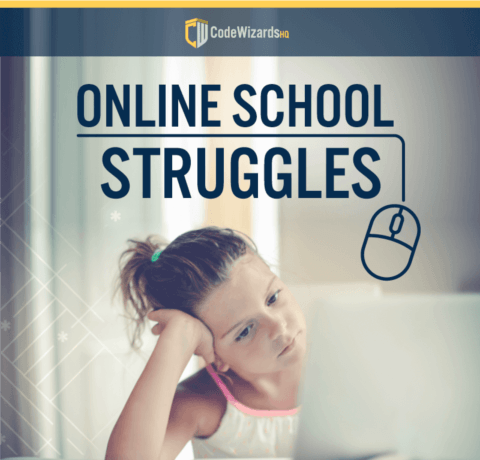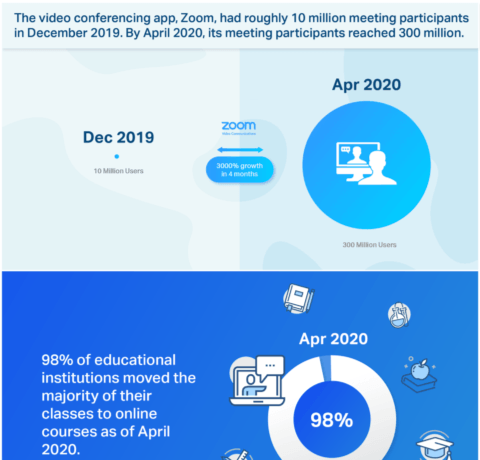Online University Infographic
For-profit universities are a fairly new innovation in education. Traditionally, higher education institutions-that is, colleges and universities-are non-profit entities. To be classified as "non-profit", schools must be organized for a purpose other than making a profit, and for most schools, this purpose is to offer students a quality education or to support faculty in teaching and making significant contributions to research across many disciplines. These non-profit schools are generally considered to be traditional.
Most brick-and-mortar schools and some online programs follow this traditional model. Over the past forty years, however, for-profit universities, most of which operate only or primarily online, have been changing the landscape of higher education. These for-profit schools operate under a different kind of business model and function more like corporations, bringing at times significant profits to their stakeholders. While for-profit schools have their detractors, there is no question that they are formidable competition for traditional schools when it comes to students and funding.
The Founders
While they were not the first people in the world to consider for-profit schooling, Michael Clifford and John Sperling are credited with the rise of creating the for-profit institution educational business model. Though he lacks a college education and used drugs in his early years, Clifford has succeeded as an entrepreneur. After becoming a born-again Christian and being advised by a Campus Crusader to look into a career in postsecondary schooling, he entered the field of for-profit education. He now has 6 universities under his control and a healthy stable of investors, including former General Electric CEO Jack Welch, who invested $2,000,000.
John Sperling, on the other hand, has a more traditional academic pedigree. A business-minded, Cambridge-educated humanities professor, he wanted to bring education to the masses. Although his for-profit classes initially had to be attended in person, and his first class had only 8 students, Sperling expanded his business significantly over the years. He started the University of Phoenix, which offered its first online courses in 1989 and is now one of the largest universities in the world.
The Numbers
Because for-profit schools adhere to a different business model than traditional, non-profit schools do, they are organized with the consumer-student in mind. For example, the University of Phoenix's campuses are built near freeways for easy access, and they are spaced approximately 20 minutes apart because that is how far people will drive in rush hour traffic. Classes at the University of Phoenix start every 5 weeks and are often offered on evenings and weekends to accommodate their students' work schedules. Although the University of Phoenix does have campuses, much of the coursework is done online.
In part because of their accessibility and open admissions policies, many students choose for-profit schools. In total, for-profit schools have enrolled 1,941,000 students for online degree programs. Grand Canyon University, a former struggling Christian college revamped by Clifford, now enrolls 40,000 students worldwide. The University of Phoenix, with 260 campuses and learning centers in the U.S., enrolls 443,000 students, which is more than the entire University of California system and Ivy League combined.
This high enrollment translates to high revenue, much of it from federal student aid. Grand Canyon University, University of Phoenix, and other for-profit schools can receive up to 86% of their revenue from federal sources. In 2004, the University of Phoenix alone received $1.7 billion in Title IV funds, or federal student aid. By comparison, in 2010, the government provided $1.8 billion, nearly the same amount, in federal funds to help rebuild New Orleans schools after Hurricane Katrina.
Another major difference between for-profit and non-profit schools is the cost to the student. Online courses at Grand Canyon University cost between $400 and $550 per credit hour. In-person classes at Stanford University, a top-tier institution, cost $773 per credit hour. But while the apparent per-class costs favor for-profit schools, the overall costs of a for-profit college education may be much less favorable. According to Barmak Nassiran, a traditional schools lobbyist, students at for-profit colleges are responsible for approximately half of the default on all education loans in the U.S. In fact, fewer than half the students at many for-profit schools repay their loans on time. However, the Department of Education is making strides toward greater oversight of for-profit schools, such as with the Gainful Employment ruling, which requires that for-profit schools graduate students be able to find jobs with sufficient salaries to pay back their student loans.
The Controversy
Critics of for-profit schools often cite their privileging of profit over student success. One concern is that for-profit schools are recruiting students who are able to pay tuition, but who are academically incapable of graduating from these degree programs. Under Federal Student Loan guidelines, it is illegal to offer commissions or incentives to staff to enroll students in college, but University of Phoenix enrollment advisors allegedly had monthly quotas of student enrollment. While the University of Phoenix did not admit guilt, it did settle a $67 million lawsuit for paying staff "incentivized compensation".
Another criticism is of the for-profit model itself, a model that necessarily draws money away from students and back towards the business and its executives. For example, according to Mark Defusco, a former executive at the University of Phoenix, for-profit colleges will spend 25% of their revenue on advertising, but only between 10 and 20% on faculty and education. This is in stark contrast to traditional, non-profit universities, which are more likely to invest in research initiatives, professionalization, facilities, and student life.
The Future
In 2007, 970 public 2-year colleges and 534 4-year colleges offered online courses, and since then that number has continued to grow. Many of these traditional schools even have online degree programs or departments that function entirely online. Stanford, MIT, Texas A & M, University of Pennsylvania, and Savannah College of Art and Design are just a few highly regarded schools that offer classes and degrees online. MIT and Harvard University are even working together on a project to offer non-credit college courses online at no cost.
Michael Clifford's next project is a shift back toward the non-profit model. His school, Patten University, will offer a college education to former prostitutes, gang members, and other socially marginalized individuals, who will likely finance their educations with Federal Student Loans.
The funds dedicated to education in the 2010 Recovery Act-over $89,000,000,000-have mostly been dedicated to expanding post-secondary education. As more Americans pursue higher education, institutions will have to grow accordingly. Both for-profit and non-profit schools-whether traditional, online, or hybrid-will play important roles.







You can adjust your cookie preferences here.